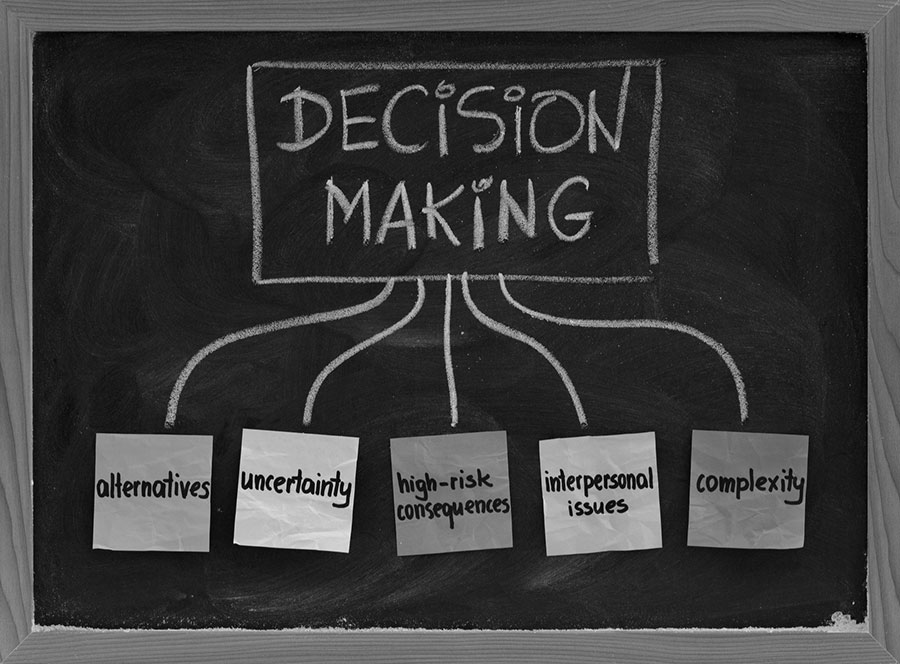Do you know your CEO Decision IQ? Why your Company’s Decision Elasticity matters?

On a cold day in Detroit January 5th, 1914 Henry Ford made a decision that would change history. He decided to pay his assembly workers more than twice the going $2 per day wage at the time in a desperate attempt to stem worker turn-over, and reduce errors fast.
The result was an American first; a new 8-hour work day paying an industry shocking $5/day ($120 today). That decision would not only improve workers’ lives, but also sent immediate shock waves throughout the industry and minds of all of America’s big industry CEOs back then.
But what did Henry Ford know to make his risk-it-all decision in time to turn things around? And if he didn’t understand the impact of that decision, would Ford Motor Company still be here today?
Not sure. But as that was then, and this is now, today’s chief executives must go well beyond whether or not the impact of a decision over time achieves the right results. More importantly and less well discussed, is the speed at which Ford’s decision did achieve the intended results. I call this measure the “Elasticity of Company Decisions” which is by my definition “the measurement of how responsive a CEO’s decisions are to the expected rate of change from those decisions.” Think beyond time vs money, or price vs quantity, as traditional measures of elasticity. In this case it’s the speed vs accuracy of a CEO’s decision.
So how does a company’s decision elasticity impact a business? This depends on a CEO’s Decision IQ, which is to say how well a CEO can understand and predict the elastic-response of a major decision on his or her company.
Let’s take as an example two CEOs of different but competing companies. Each CEO makes the same decision at the same time, perhaps to shift marketing strategy as a reaction to falling sales, or review an opportunity to acquire a competitor. Over time, if one CEO has a very elastic organization vs the other then the speed and accuracy of that decision (as it flows throughout the enterprise) creates an inherent competitive advantage. In this case, especially in its ability to evaluate and execute as a single workforce moving in the same direction. Think start-up vs mature company. When workers are more quickly on the same page, things can often get done much faster than a competitor has time to react.
Thus as an observer — can we determine in advance which chief executives have built up the right elasticity level in their organization? The answer in part depends on what we know about the good or bad elasticity factors each CEO has layered into the management structure of the business over time. Peter Drucker (the management guru) discussed this issue in his book, Concept of the Corporation (1949) based on reviewing the organizational and decisional structure among other things inside the General Motors Corporation back then.
His suggestion was to flatten the organizational hierarchy to maximize the impact and efficiency of GM’s management decisions. CEO Alfred Sloan at the time however, took the insight as criticism of his management approach, and rebuffed it. Today Sloan might be let go for his lack of insight. He was in effect suggesting that any decision, like Ford’s would have the same immediate and lasting shareholder benefits no matter how big or bureaucratic GM would become.
Now, consider that none of this is new. In fact there are dozens of books written about flatter organizational and management structures and the benefits they accrue across the board. But that is not my point. My point is to teach CEOs at companies big and small to identify their Decision IQ and use it to their advantage or improve it.
As an M&A investment banker I see this advantage (or disadvantage) repeatedly with CEOs and Boards of Directors at companies we consult to. What I see is that the higher a company’s decision elasticity the higher the profits, growth and enterprise value, not to mention the benefits of more expeditiously communicating any needed shift in corporate mission statements or goals.
Conversely, when I see a company’s elasticity factor is too low, meaning the company has a large built-in latency (delayed) response factor, important CEO/Board level decisions can take days, weeks or even months to make things happen. And when that’s the case, it’s time for a change.
So here’s the bottom line.
Discover your Decision IQ. And improve it by building a spreadsheet to test-measure your company’s decision elasticity by tracking the announcement date of each major decision, the number of managers that need to take action and the time it takes to get the desired results. If the results measured are poor, chances are good you may be unwittingly turning a good decision into a bad one. But, on the other hand, if your company’s decision elasticity and IQ factor is top-drawer, you can like Henry Ford, use this edge to beat the competition, increase the value of your company, and improve the lives’ of your workers too. Make sense?
Bring the best of the CEOWORLD magazine's global journalism to audiences in the United States and around the world. - Add CEOWORLD magazine to your Google News feed.
Follow CEOWORLD magazine headlines on: Google News, LinkedIn, Twitter, and Facebook.
Copyright 2025 The CEOWORLD magazine. All rights reserved. This material (and any extract from it) must not be copied, redistributed or placed on any website, without CEOWORLD magazine' prior written consent. For media queries, please contact: info@ceoworld.biz








